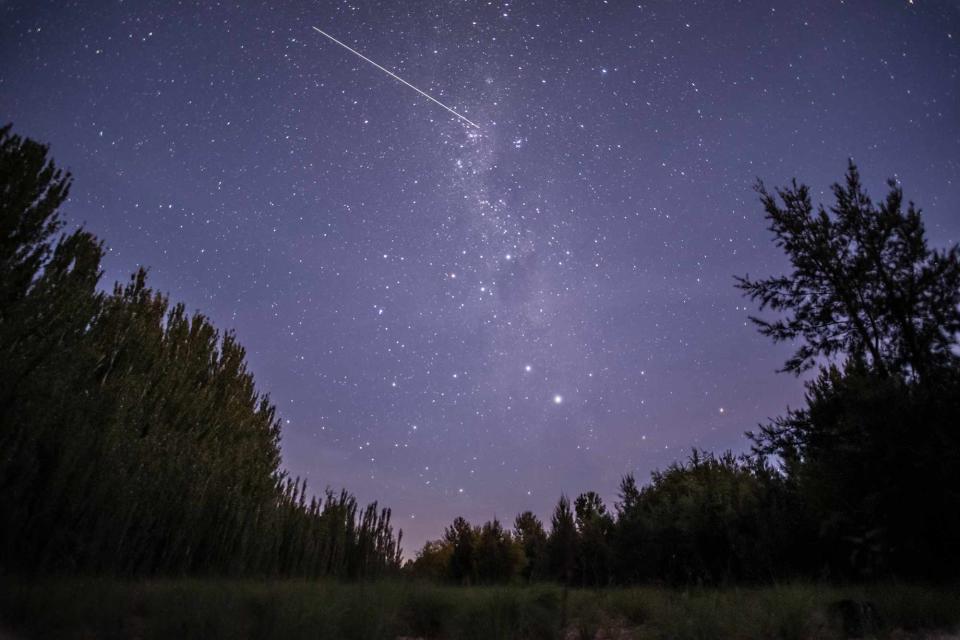This Weekend’s Meteor Shower Could Have Thousands of Meteors per Hour — How to See It
This meteor shower is particularly good for those who'd like a full night's sleep.

Willscape/Getty Images
As incredible as meteor showers are, there's one thing that makes viewing them rather difficult — they frequently peak in the middle of the night. Fortunately, the next meteor shower of the year doesn't have that problem.
The 2023 Draconid meteor shower is predicted to peak the evening of October 8 into the morning of October 9, according to skywatching site EarthSky. While most meteor showers are best observed around midnight, this meteor shower is best observed in the evening hours. That's because its radiant point, or the point from which the meteors appear to emanate, reaches its highest point in the night sky at that time.
If you're looking to catch this astronomical show, here's everything you need to know.
What Is the Draconid Meteor Shower?
Meteor showers occur when the Earth passes through a debris trail left behind by a celestial object like a comet or an asteroid. In the case of the Draconids, its parent comet is 21P/Giacobini-Zinner, which completes an orbit around the sun every 6.6 years. Usually this is a quieter event with about 10 meteors per hour, but in some years, the Draconids produce a meteor storm with rates of hundreds to thousands of meteors per hour. The last major event was in 2011, when up to 600 meteors per hour streaked across the sky in Europe.
When Is the Draconid Meteor Shower?
The Draconids are a short-duration meteor shower, only running from Oct. 6 to Oct. 10 this year. The best time to look for them is the evening of Oct. 8, when the meteor shower is anticipated to peak. Head outside as soon as darkness falls, and stick around for a few hours to see what happens — and then you can enjoy a full night's sleep!
How Can I See the Draconid Meteor Shower?
In order to see the Draconids, you'll want to get as far away from light pollution as possible — a dark-sky place would be ideal! Once you're out in the darkness, let your eyes adjust for 20 minutes or so, then simply look up to the sky.
The meteors will appear to emanate from the constellation Orion, for whom this shower is named, though they will be visible all over the sky.
When Is the Next Meteor Shower?
Following the Draconids will be the peak of the Orionid meteor shower, which occurs as the Earth passes through the debris trail of Halley's Comet. The Orionids are active right now — from Sept. 26 through Nov. 22 — and should peak on the night of Oct. 21 into the morning of Oct. 22, per EarthSky.It should produce an estimated 10 to 20 meteors per hour, and potentially some fireballs.
For more Travel & Leisure news, make sure to sign up for our newsletter!
Read the original article on Travel & Leisure.

